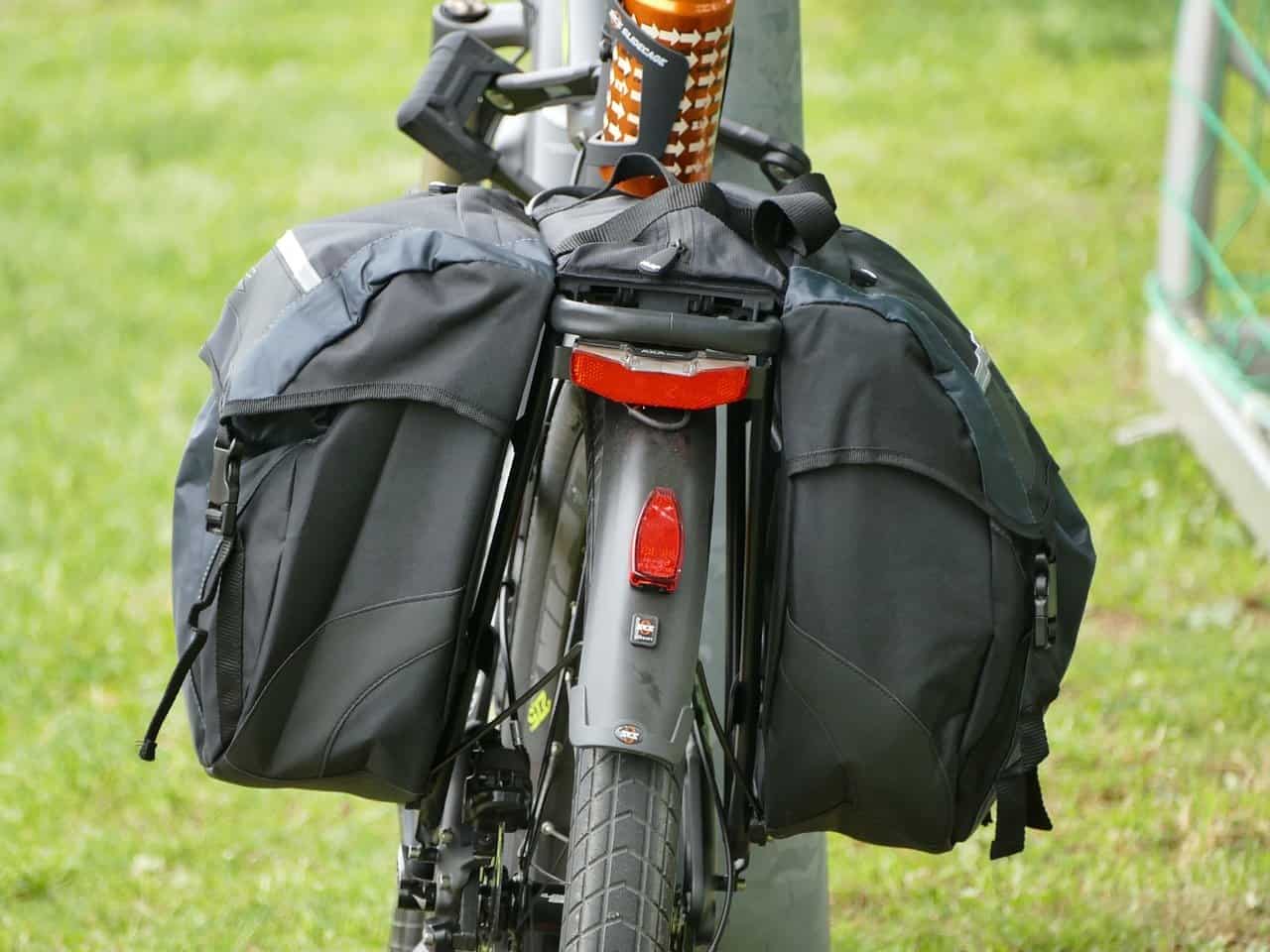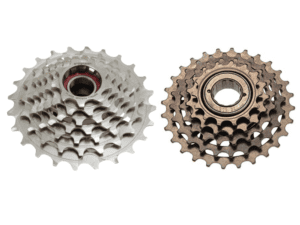Although you might decide to purchase a generic frame bag, buying an already designed bag from the market does not offer the amount of space you might need.
You can also buy a custom frame bag, but these are very expensive.
But don’t worry. We have you covered. This guide will explore how to build a bike frame bag.
Supplies You Need
When making a bike bag, you need the following supplies.
- Sewing machine.
- Fabric pins.
- Tape measure.
- Scissors.
- Marking pen.
- Seam ripper.
- Cardboard.
- Velcro.
- Fabrics.
- Zippers.
- Threads.
- Nylon webbing.
- Zipper foot & straight edge.
Directions to Make Your Bike Bag
The process of making a bike bag is straightforward, but it would still take about four hours to get it done, so be prepared to spend a lot of time. It’s essential to take your time when making the bag to prevent ugly stitches and low quality, especially since you’ll be using it for a long time.
Create a Template For Your Frame
The first thing you need to do is cut out a cardboard template for your frame. You can tape the cardboard to the frame to cut it out or ask someone to hold it up for you and use your marker to trace the interior. As long as you do this right, you can fit it nicely in the frame. If it doesn’t work, you can try again with another cardboard.
You can also hold it into place with cord wraps and even check how long the attachment straps will be for later. After refining the cardboard template, you can move on to the next step.
Cut the Fabric Out
How you cut the fabric depends first on the zipper design you want. If you’re going to have a zipper with a hood, cut one side to the template with a 5/8-inch seam allowance all the way. That side will have the seam allowance stopping at the zipper, and you have to cut below and above the zipper.
Now, you can lay your fabric on a flat surface and put the template on it. You can pin it in place so that the material does not slip away and add a 5/8-inch seam allowance all around.
After cutting out the main pieces, you can cut out the bottom, top, back, and front of the bag based on the width. Also, try to use your scrap fabric as much as possible.
It’s best to go for a 2.5-inch width at the end of the cutting, so avoid using the seam allowance on both sides.
Related: How To Attach Handlebar Bag To A Bike
Make the Zipper
Now that you have a pile of cut-out fabric, you need the zipper side panel, which includes the zipper, above and below the zipper piece, and a zipper foot.
Since below the zipper material is easy and sustainable, you should start with it.
Step 1: Press the 5/8-inch seam allowance together on their wrong size.
Step 2: Pin the zipper to the material.
Step 3: You will have three layers: the folded seam allowance and the zipper, and sew it on the right side of the zipper.
Step 4: Then, sew the fabric along the zipper.
Step 5: The next thing to do is the above zipper material, which takes more time.
Step 6: Lay the other panel on the wrong side first.
Step 7: Then, put the zipper panel below the zipper material, and sew the zipper in the other side panel. Line all layers correctly.
Step 8: Put the above zipper material on the right side and line it up to the non-zippered panel.
Step 9: Fold the end above the zipper material under itself, line it up to the top side of the zipper, and use a pin to keep it in place. You can also determine how much hood you want to be over the zipper at this point.
Step 10: Turn it to the back and align the other panel to the zippered panel.
Step 11: Sew the hood down.
Make the Strap
Now, you need straps for your bike bag, and you can do so with Velcro tape. You can also add some fabric if you want it to be more stylish than just Velcro, like an outer Cordura layer. When sewing, leave the inner part of the strap unfinished since you will sew it into the bag.
Make the Dividers
This step is optional and only for those who want dividers in their bike bag. Dividers help organize your bike packing items and keep them from becoming too full. You can choose your length by measuring or holding the loop and hook against the back.
Sew your hook, loop along the middle of your hem tape, and measure where you want to put the divider on your side panel. For accuracy, you can set the two main panels together and mark the inside of the fabric by pushing pins through.
Pin and Sew
Now, this is the step where all the fabric you cut and zipper panels come together, so it’s best to pay attention. First, you need to cut out the hook and loop attachment based on your preferences, and you can use your scrap fabric to do this.
Then, take the largest side panel and place it with the right side facing up, and it’s much easier to start with the longest side. Take your template to check where the hook and loop will be sewn in, and use your 5/8-inch seam allowance to sew your sides.
Remember to get your 2.5 widths and use the seam allowances. Ensure the edges line up to the primary side panel, including the corners. Now, repeat this with the opposing panel and sew it all together.
Finish Up
Finally, put your hand into the bag and flip it right side out. You can also adjust the fabric in the corners. By now, you should have a bike bag that goes perfectly well with your frame. You can also attach the bag to the saddle of your bike if it is compact enough.
If you’re new to sewing and fabric, don’t hesitate to experiment. After a few tries, you can get the perfect bag that you want. These tips give below should help you as well.
But if you have experience, it should be easy to get this on the first go. Now, you can place your custom bag on your bicycle and start enjoying your ride.





